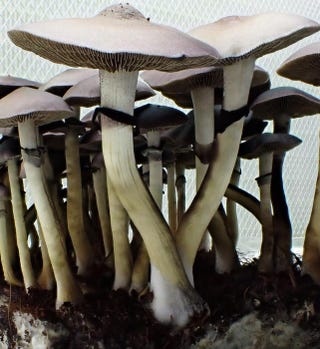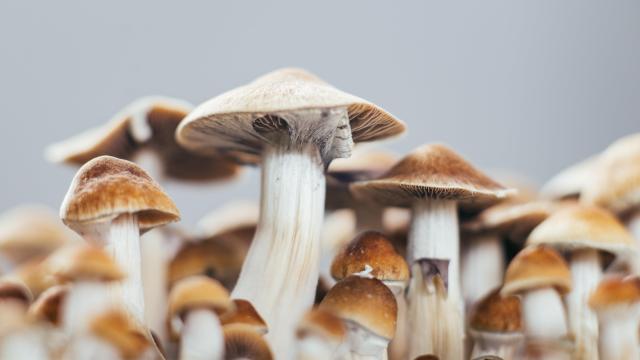Researchers in Australia have analyzed the genomes of over 100 commercial and wild-grown varieties of Psilocybe cubensis, a psychoactive fungi known as the magic mushroom. The findings may eventually help growers develop “designer shrooms” that have their own unique health benefits, the team says.
Psychedelic mushrooms have been used by humans for a long time, possibly for thousands of years. The main ingredient in these mushrooms that affects our brain is called psilocybin. Though there are many psilocybin-containing mushrooms, Psilocybe cubensis is the most common commercially grown species nowadays.
Psilocybin is of course taken recreationally, if illegally in many places, for its euphoric and dissociative effects. But in recent years, it’s started to receive a lot more attention for its potential health applications. Studies have found that psilocybin used in combination with psychotherapy may help people struggling with depression, substance use problems, and post-traumatic stress disorder who haven’t responded to other options. The first phase III trials of psilocybin for depression began this year and are expected to yield results as early as mid-2024.
While it will take time to confirm the medicinal benefits of psilocybin-assisted therapy in large-scale research, there are plenty of people already using magic mushrooms for any number of reasons. Researchers at The University of Queensland, Australia wanted to better understand the many naturally grown or cultivated varieties of P. cubensis out there today and how our domestication of this fungi has changed its evolutionary journey.
Aided by members of an underground community of magic mushroom growers, the team ultimately collected samples from 122 varieties of P. cubensis, including 86 commercial cultivars and 38 varieties locally grown wild in Australia. They then sequenced and compared the genetics of these varieties. Their results were published Monday in the journal Current Biology.
The team found that commercial cultivars contained much less genetic diversity than their wild counterparts, which often happens to living things that become domesticated. But this difference may not have always existed, since the team also found evidence that the Australian varieties are naturalized, meaning they originated from mushrooms introduced to the continent from somewhere else. Their greater diversity today suggests that these naturalized mushrooms recovered from the lack of variation seen in commercialized cultivars.

“Some of these cultivars have been nearly stripped of any diversity except at their genes controlling sexual reproduction,” said study author Alistair McTaggart in a statement from Cell Press, publishers of the journal. “Whether this happened intentionally, by targeted inbreeding to fix traits over the last half century, or unintentionally through a lack of diversity to cross against is hard to know.”
McTaggart and his team’s research might not just tell us more about the genetic history of these psychedelic mushrooms, but inform their future. The scientists found unique gene variations related to psilocybin production in the naturalized mushrooms, and these variations could be used to create “designer shrooms” that select for relevant differences in how psilocybin is synthesized naturally. The study authors have since founded a startup called Funky Fungus that’s already using the work to develop unique cultivars of psychedelic mushrooms for further research and drug development.
“Magic mushrooms are the cheapest source of psilocybin and may fill a niche in natural drug development,” McTaggart said. “There is yet more to understand about how magic mushrooms produce other compounds that may impact a psilocybin experience, and this will be an exciting area of research to watch unfold.”
